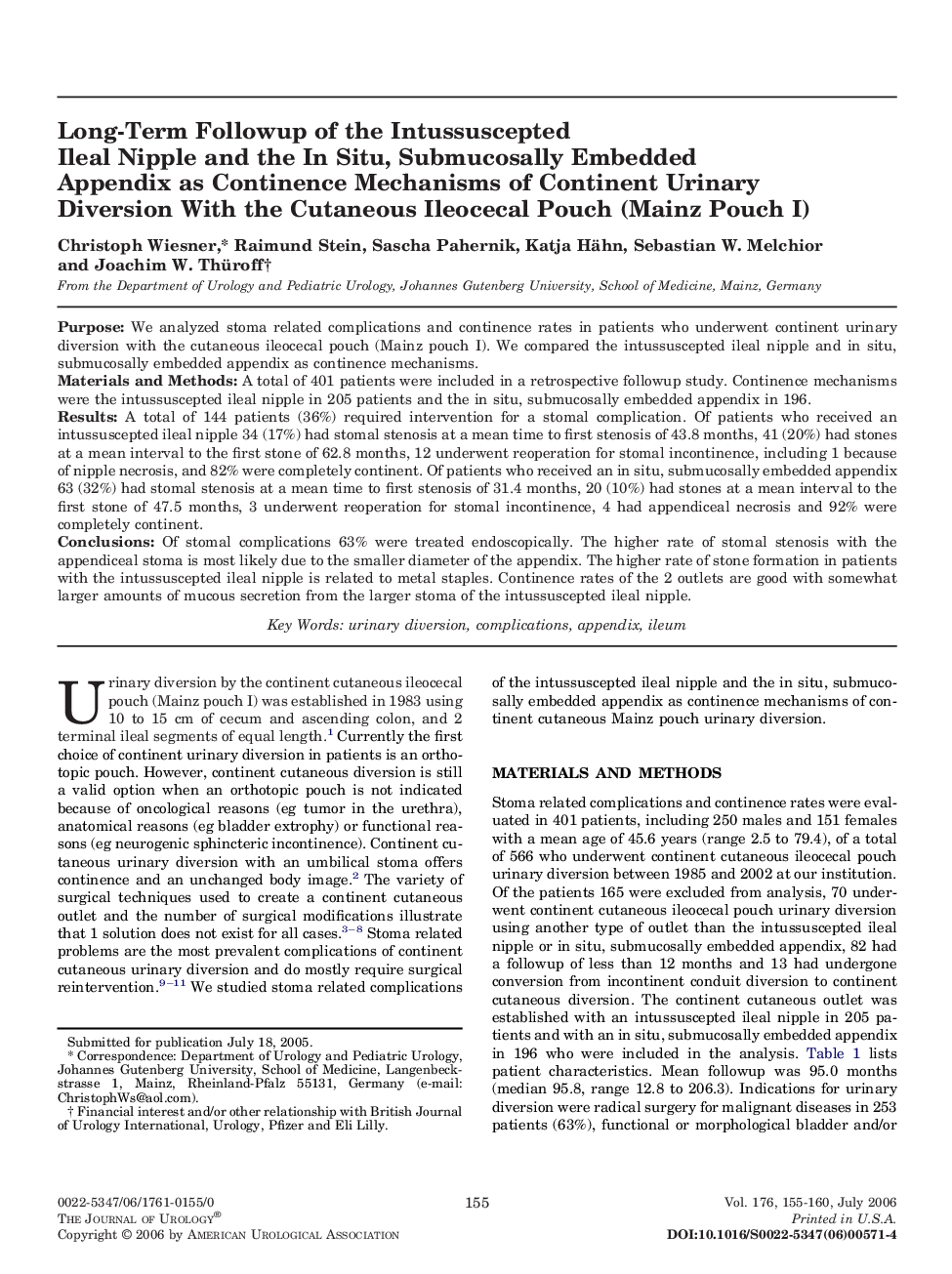| Article ID | Journal | Published Year | Pages | File Type |
|---|---|---|---|---|
| 3877170 | The Journal of Urology | 2006 | 6 Pages |
PurposeWe analyzed stoma related complications and continence rates in patients who underwent continent urinary diversion with the cutaneous ileocecal pouch (Mainz pouch I). We compared the intussuscepted ileal nipple and in situ, submucosally embedded appendix as continence mechanisms.Materials and MethodsA total of 401 patients were included in a retrospective followup study. Continence mechanisms were the intussuscepted ileal nipple in 205 patients and the in situ, submucosally embedded appendix in 196.ResultsA total of 144 patients (36%) required intervention for a stomal complication. Of patients who received an intussuscepted ileal nipple 34 (17%) had stomal stenosis at a mean time to first stenosis of 43.8 months, 41 (20%) had stones at a mean interval to the first stone of 62.8 months, 12 underwent reoperation for stomal incontinence, including 1 because of nipple necrosis, and 82% were completely continent. Of patients who received an in situ, submucosally embedded appendix 63 (32%) had stomal stenosis at a mean time to first stenosis of 31.4 months, 20 (10%) had stones at a mean interval to the first stone of 47.5 months, 3 underwent reoperation for stomal incontinence, 4 had appendiceal necrosis and 92% were completely continent.ConclusionsOf stomal complications 63% were treated endoscopically. The higher rate of stomal stenosis with the appendiceal stoma is most likely due to the smaller diameter of the appendix. The higher rate of stone formation in patients with the intussuscepted ileal nipple is related to metal staples. Continence rates of the 2 outlets are good with somewhat larger amounts of mucous secretion from the larger stoma of the intussuscepted ileal nipple.
